Posted: November 10th, 2014 | No Comments »
What was it with hard boiled crime writer Raymond Chandler and Chinese rugs? Regular China Rhyming readers will know I often go for a bit of a wander up some rather obscure alleyways of China studies and Chinoiserie and this is one of those alleys I’m afraid. However, I recently decided to reread a bit of Chandler and his Philip Marlowe novels as a hard boiled noir fan and because the great Glaswegian crime writer William Macillvaney recently recommended, at the Getafe Negro noir writing festival, Chandler’s The Lady in the Lake as the best noir novel ever written.
And it does seem Chinese rugs pop up rather a lot in Chandler. Take the aforementioned The Lady in the Lake (1943) for instance – page 1 in fact – when Marlowe visits the Treloar Building on LA’s Olive Street and the offices of the Gillerlain Company – “Their reception room had Chinese rugs, dull silver walls, angular but elaborate furniture, sharp shiny bits of abstract scultpture on pedestals and a tall display in a triangular showcase in the corner.” Just pages later an interior office also features more Chinese rugs. Shortly afterwards Marlowe heads off towards Malibu to see a man called Lavery, a gigolo – “He held the door wide and I went past him, into a dim pleasant room with an apricot Chinese rug that looked expensive….” There’s those Chinese rugs again!
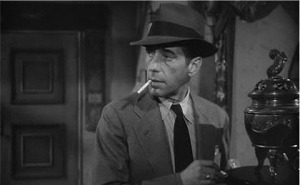 Bogart as Marlowe
Bogart as Marlowe
Chinoiserie pops up in his earlier novel The Big Sleep (1939) as well. Again Marlowe is on the prowl in LA – “A. G. Geiger’s place was a store frontage on the north side of the boulevard near Las Palmas. The entrance door was set far back in the middle and there was a copper trim on the windows, which were backed with Chinese screens, so I couldn’t see into the store. There was a lot of oriental junk in the windows. I didn’t know whether it was any good, not being a collector of antiques, except unpaid bills.” Later Marlowe get to the antique dealer Geiger’s house – examining the floor by a totem pole Marlowe notices things: “At its foot, beyond the margin of a Chinese rug, on the bare floor, another rug had been spread.” Geiger is dead and, you’ve guess it, laid out on top of a Chinese rug. We already know what this room looks like – “It was a wide room, the whole width of the house. It had a low beamed ceiling and brown plaster walls decked out with strips of Chinese embroidery and Chinese and Japanese prints in grained wood frames. There were low bookshelves, there was a thick pinkish Chinese rug in which a gopher could have spent a week without showing his nose above the nap.”
Indeed hardly a work of Chandler’s doesn’t feature a Chinese rug. In The Simple Art of Murder (1950), a collection of Philip Marlowe stories, Marlowe visits the house of a rather villainous Filipino character – “It was a big room with walls paneled in diagonal strips of wood. A yellow Chinese rug on the floor, plenty of good furniture, countersunk doors that told of soundproofing, and no windows.” In Trouble is My Business (1950) a peach coloured Chinese rug makes an appearance.
So what was it with Raymond Chandler and Chinese rugs – sorry, no idea!
 Raymond Chandler – a man who clearly appreciated a good Chinese rug
Raymond Chandler – a man who clearly appreciated a good Chinese rug
Posted: November 9th, 2014 | No Comments »
Ernest Cromwell Peake, medical missionary in northern China and father of Mervyn Peake of Gormenghast fame, has had his China memoirs published by the British Library….
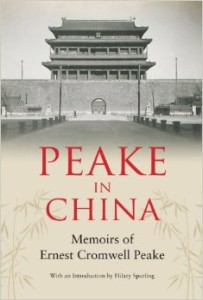
Dr Ernest Cromwell Peake was the first medical missionary to arrive in the region of Hankow, inland China, and he had to overcome significant obstacles in the building and establishment of his hospital, as well as the intense hostility of the Chinese towards foreigners and towards Western medical practice. He succeeded in his endeavour, and during his time in China he also married and had two children, one of whom was the writer and artist Mervyn Peake, whose first 12 years were spent there. Dr Peake wrote his memories of this period many years later when he had returned with his family to England, recording his arrival, his impressions of the Chinese, and the story of his establishment of a hospital. He also witnessed the historic events of the Chinese Revolution in 1911, the overthrow of the Qing Dynasty and the Boxer Rebellion. The memoirs provide a fascinating account of a Westerner in China at the turn of the last century. Of equal interest is the influence of the China years on Dr Peake’s son Mervyn, who was born in China and went on to become one of the most talented British writers and artists of the twentieth century. An introduction by the renowned biographer Hilary Spurling explores the connection between Mervyn Peake’s years in China and his Gormenghast novels.
Posted: November 8th, 2014 | No Comments »
Netflix is running trailers for its latest big TV series – Marco Polo. Some will love it, some will hate it….
Here’s the trailer…
and here’s the creator James Fusco talking about it with some “historians”….


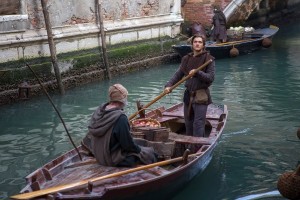
Posted: November 7th, 2014 | 2 Comments »
I know very little about this publication from 1930s/1940s Shanghai – Russkiye Zapiski, or Russian Annals. This letterhead is from 1940 and shows the publication as bi-monthly and headquartered on the rue du Roi Albert, now Shanxi Road South. I believe the publication was established around 1937 and had links with White Russian emigre groups in Paris (noting that it was based in the French Concession in Shanghai). Things are slightly confused due to spellings and translations – it appears in records as Russkie and also as Russian Notes as well as Annals. The publication appears to have been founded in Shanghai though perhaps funded by the Russian emigre community in France. And that’s all I know I’m afraid.
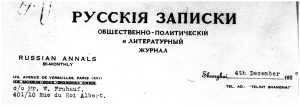
Posted: November 6th, 2014 | No Comments »
RAS WEEKENDER
SATURDAY 8th November 2014
4pm for 4.15pm
Â
Tavern at the Radisson Xingguo Hotel
Looting and Burning the Yuanmingyuan:
The event of 1860, its Afterlife and Interpretation Today in China
Dr. Ines Eben v. Racknitz
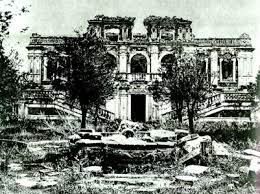
The looting and burning of the Yuanmingyuan, one of the most splendid residences of the ruling Qing emperors, by allied British and French troops during the China expedition of 1860, is until today remembered in China as a symbol of humiliation and defeat. Whereas this act of vandalism in the so-called “Old Summer Palace†is hardly known in Europe, it became, along with the Boxer rebellion, a strong argument against “Western imperialism†during the history of the long 20th century in China.
The lecture will describe how this event became a part of a Chinese “cultural memoryâ€, discuss the “life of the ruins†at the fin de siècle, and describe the reconstruction work and situation today.
Ines Eben v. Racknitz studied sinology, comparative literature and religious studies in Leipzig, Beijing, Berlin and Stanford University. She graduated with an Magister Artium in sinology from Freie Universität Berlin. After working for Siemens in Shanghai and The Guardian’s correspondent office in Berlin, Ines continued her studies at University of Konstanz and graduated with a PhD in history.
Currently, she holds a post as a lecturer in the department of history at Nanjing University and ist the first foreign professor to teach Chinese history at Nanjing university. Her research interests are in late Imperial China, the Republic of China, and the history of China’s international relations. Her book about the China expedition of 1860 and the looting and burning of the Yuanming yuan appeared in 2012 in Germany.
ENTRANCE: Â Members 70 RMB – Non Members 100 RMB
Includes a glass of wine or soft drink
Priority for RAS members. Those unable to make the donation but wishing to attend may contact us for exemption.
MEMBERSHIP applications and membership renewals will be available at this event.
WEBSITE: Â www.royalasiaticsociety.org.cn
Posted: November 5th, 2014 | No Comments »
Graphic Images and Consumer Culture is in Chinese but worth it for the images alone…
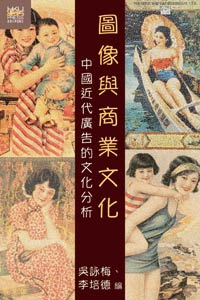
本書從æ·å²å¸ã€å‚³æ’å¸ã€å»£å‘Šå¸ã€è—è¡“å²ã€æ”¿æ²»å®£å‚³ç‰è·¨å¸ç§‘ç ”ç©¶çš„è¦–è§’å‡ºç™¼ï¼Œä»¥å ±åˆŠé›œèªŒå»£å‘Šå’Œæœˆä»½ç‰Œå»£å‘Š ç•«ç‰è¦–覺圖åƒç‚ºåˆ†æžå°è±¡ï¼Œé›†ä¸è¨Žè«–近代ä¸åœ‹ï¼ˆåŒ…括上海ã€å°ç£å’ŒèˆŠæ»¿æ´²ï¼‰å»£å‘Šæ–‡åŒ–的特色,以åŠæ—¥æœ¬å»£å‘Šå°è¿‘代ä¸åœ‹å•†æ¥æ–‡åŒ–的影響。主è¦å…§å®¹åŒ…æ‹¬ï¼šå ±åˆŠå»£å‘Šçš„ 文化翻è¯å•é¡Œï¼›å»£å‘Šèˆ‡å•†æ¥ç«¶çˆï¼›å—京路四大百貨公å¸çš„廣告媒體功能;外來廣告技術的接å—和本地化;上海和大阪å°åˆ·æ¥çš„人æ‰äº¤æµï¼›å¥³æ€§ä½œç‚ºã€Œç¾ä»£æ€§ã€çš„文化 符號;以åŠä¸åœ‹ç¤¾æœƒä¸»ç¾©çš„政治宣傳è—術。本書有助我們ç†è§£å•†æ¥è¦–覺è—è¡“æ€Žæ¨£å‰µé€ ã€Œæ±äºžç¾ä»£æ€§ã€ã€å¦‚何與「殖民主義ã€å’Œã€Œç¤¾æœƒä¸»ç¾©ã€ç›¸çµåˆï¼Œåˆå¦‚何在地å€äº¤ æµä¸å½¢æˆç‰å•é¡Œï¼Œä¸¦æä¾›äº†å¶„æ–°çš„è¦–é»žå’Œç ”ç©¶æ–¹æ³•ã€‚
本書ä¸åƒ…ä»¥ç ”ç©¶ä¸åœ‹å•†æ¥å²ã€å»£å‘Šå²ã€è—è¡“å²ã€å‚³æ’å¸åŠä¸æ—¥æ–‡åŒ–交æµå²çš„å¸è€…為å°è±¡ï¼Œä¹Ÿå¯ä½œ ç‚ºæœ¬ç§‘èˆ‡ç ”ç©¶ç”Ÿèª²ç¨‹çš„æ•™æ,而且å°å¾žäº‹äºžæ´²ç ”究ã€å¥³æ€§ç ”究ã€å¸‚å ´ç‡ŸéŠ·ã€å‰µæ„產æ¥ã€æµè¡Œæ–‡åŒ–ã€éƒ½å¸‚文化ã€æ¶ˆè²»æ–‡åŒ–和商æ¥æ–‡åŒ–ç ”ç©¶çš„å¸è€…å’Œå¸ç”Ÿï¼Œä»¥è‡³æœ‰æ„了解 近代ä¸åœ‹ç¤¾æœƒæ–‡åŒ–的普羅讀者亦有所助益。
å³è© 梅,ç¾ç‚ºé¦™æ¸¯å¤§å¸ç¾ä»£èªžè¨€æ–‡åŒ–å¸é™¢åè½åŠ©ç†æ•™æŽˆã€‚
æŽåŸ¹å¾·ï¼Œç¾ç‚ºé¦™æ¸¯å¤§å¸ç¶“æ¿ŸåŠå·¥å•†ç®¡ç†å¸é™¢å®¢å¸å‰¯æ•™æŽˆã€‚
Posted: November 4th, 2014 | No Comments »
It may seem like just yesterday to some of us, but to many younger people the events that took place in Shanghai back in the 1990s and early 2000s are indeed ancient history, so they probably now get included on China Rhyming.
Anyway, the saga of Mark Kitto and the That’s magazine empire in China has become quite legendary (and the details in brief here for those not in the know) and now there’s a book by the man himself detailing those events….That’s China
launching this week at Daunts in Marylebone and China Rhymers are invited….

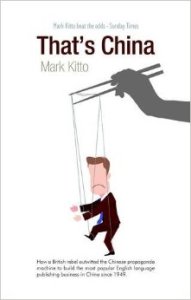
 In his best-selling debut, China Cuckoo, Mark Kitto described how he ‘lost a fortune and found a life in China’. In That’s China, the thrilling prequel, he tells the story of how he made that fortune. To the Chinese Communist Party, media is state owned propaganda. No individuals, let alone foreigners, will ever have a stake in it For seven roller coaster years, Mark Kitto outwitted powerful competitors and jealous partners to build the most profitable and popular English language publishing business in China since 1949. No foreigner in modern times has come so close to the heart of the Chinese propaganda machine on his own terms. Not even Rupert. Told with Kitto’s trademark self-deprecating humour and potentially unsettling honesty, That’s China is a rare thing, a business saga that will have you on the edge of your seat all the way to the final showdown; in the highest law court in China.
Posted: November 4th, 2014 | No Comments »
Hong Kong Lit Fest 2014 gets underway from October 31st to November 9th…a few events of possible interest to China Rhymers….

November 5th – Frank Dikotter will be talking about China immediately post-1949 – The Tragedy of Liberation
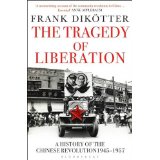
Following the critically acclaimed Mao’s Great Famine, Frank Dikötter’s latest book The Tragedy of Liberation is the second in a planned trilogy about the history of China under Mao Zedong, making use of new archival evidence to look at the first decade of the People’s Republic of China. The book, nominated for the Orwell Prize, was declared by the South China Morning Post to be “essential reading for anyone who wants to understand the nature and history of the communist state.†In this session, Frank Dikötter will take us into a profoundly dark period of Chinese history.
November 6th – Mark O’Neill will be talking about his history of the Coolie Corps in WW1 – The Chinese Labour Corps

During WWI, tens of thousands of Chinese labourers travelled to Europe to work both on the war front and on the home front. They return to China at the end of the conflict but their brave contributions have been largely ignored in histories of the war to end all wars. In his concise book The Chinese Labour Corps, part of Penguin’s series on WWI in China, O’Neill explores this overlooked chapter in the history of the First World War.
 Raymond Chandler – a man who clearly appreciated a good Chinese rug
Raymond Chandler – a man who clearly appreciated a good Chinese rug











